Most travelers find San Miguel de Allende’s Day of the Dead celebration an extraordinary cultural immersion that transforms the city into a vibrant tapestry of tradition and remembrance. You’ll witness streets adorned with intricate altars, marigold-lined pathways, and locals dressed in elaborate skeletal makeup, creating a mesmerizing spectacle. Your journey through this UNESCO World Heritage site during Día de los Muertos promises unforgettable experiences, from candlelit cemetery vigils to colorful parades that honor departed loved ones. As you explore the cobblestone streets, you’ll discover a profound celebration that blends indigenous and Catholic traditions, offering you a deeply personal glimpse into Mexican cultural heritage.
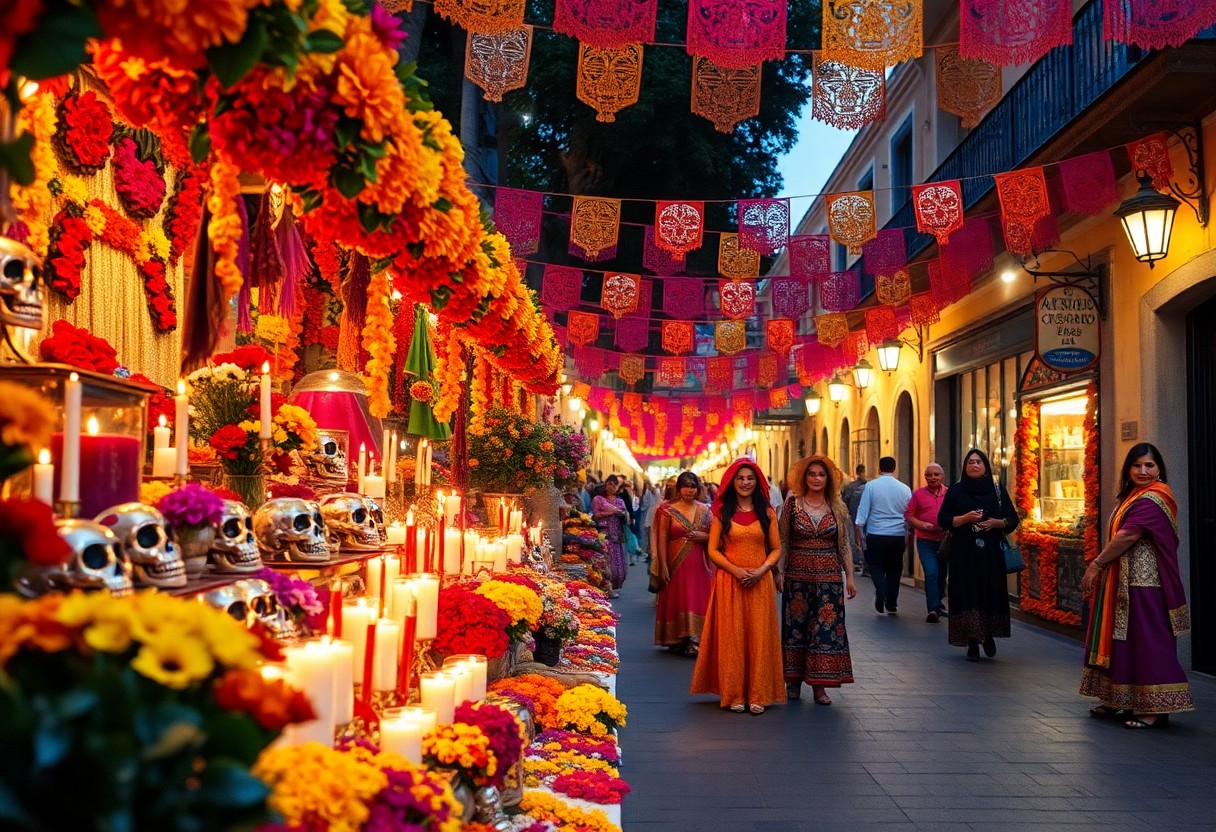
Understanding Day of the Dead
The Day of the Dead (Día de los Muertos) is a vibrant Mexican holiday that celebrates life and honors deceased loved ones. You’ll find this tradition deeply rooted in indigenous cultural practices, blending pre-Hispanic rituals with Catholic influences. In San Miguel de Allende, you’ll experience a unique interpretation of this festive commemoration that transforms grief into a joyous celebration of memory and connection.
Historical Significance
Dead ancestors have long been revered in Mexican culture, with roots tracing back to Aztec and Mixtec civilizations. You’ll discover that this tradition predates Spanish colonization, representing a profound spiritual connection between the living and the deceased. The ritual reflects a belief that death is not an end, but a continuation of life’s journey, where your loved ones temporarily return to share in your celebrations.
Cultural Importance
Dead loved ones are honored through elaborate altars, vibrant decorations, and personal offerings. You’ll witness families creating intricate ofrendas with photographs, favorite foods, and meaningful objects that celebrate the individual’s life. This practice serves as a powerful mechanism for preserving family memories and maintaining spiritual connections.
A comprehensive understanding of Day of the Dead reveals its profound psychological and social significance. You’ll find that this tradition helps communities process grief, celebrate individual lives, and maintain intergenerational connections. The ritual provides a structured, communal approach to mourning that transforms potential sorrow into a celebration of life’s continuity.
Modern Interpretations
Understanding contemporary Day of the Dead celebrations in San Miguel de Allende shows how traditional practices evolve. You’ll see artistic interpretations blending historical customs with modern aesthetic sensibilities, creating visually stunning and emotionally resonant experiences.
Significance of modern interpretations extends beyond visual spectacle. You’ll witness how younger generations reinterpret ancestral traditions, incorporating global artistic influences while maintaining core cultural values. This dynamic evolution ensures the tradition remains relevant and meaningful to contemporary Mexican society.
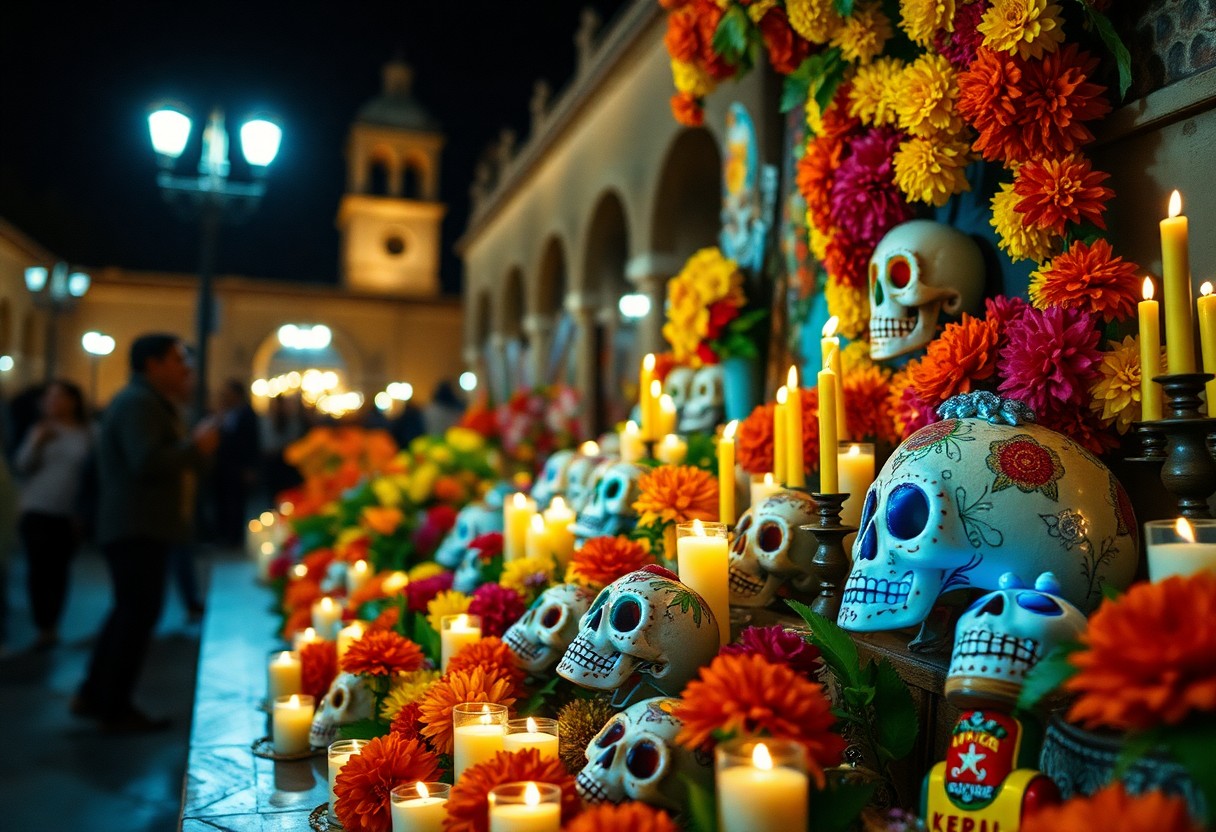
Types of Celebrations in San Miguel de Allende
Even San Miguel de Allende offers diverse Day of the Dead celebrations that capture the essence of this profound cultural event. The city showcases multiple ways to experience this meaningful tradition:
- Traditional altar displays
- Street parades
- Cemetery visits
- Community gatherings
- Cultural performances
After exploring these vibrant commemorations, you’ll gain a deeper understanding of the local customs.
| Celebration Type | Description |
|---|---|
| Traditional Observances | Home-based altar creation and family remembrances |
| Public Parades | Colorful street processions with costumes |
| Cemetery Rituals | Cleaning and decorating family graves |
| Community Events | Shared meals and cultural performances |
| Art Exhibitions | Local artistic interpretations of the holiday |
Traditional Observances
On this special day, you’ll witness families creating intricate altars adorned with photographs, favorite foods, and personal items of deceased loved ones. These personal shrines represent a profound connection between the living and the departed.
Parades and Processions
An extraordinary display of cultural expression unfolds through vibrant street parades featuring elaborate costumes and makeup.
For instance, you’ll see participants dressed as calaveras (skeletons), wearing ornate makeup and traditional clothing. The processions typically include music, dancing, and community participation, transforming city streets into a spectacular cultural celebration.
Community Gatherings
An integral part of the celebration involves communal experiences where locals and visitors share meals, stories, and traditions.
Another fascinating aspect of these gatherings is the sense of collective remembrance and joy. You’ll find neighborhoods coming together, sharing traditional foods like pan de muerto and sharing memories of loved ones who have passed away.
A Step-by-Step Guide to Participating
Once again, you’ll find yourself immersed in San Miguel de Allende’s vibrant Day of the Dead celebrations. Here’s a comprehensive guide to help you navigate the festivities:
| Step | Action |
|---|---|
| 1 | Prepare traditional altar |
| 2 | Select appropriate attire |
| 3 | Participate in local ceremonies |
Preparing for the Celebration
One vital aspect of Day of the Dead in San Miguel involves gathering specific items for your altar. You’ll want to collect photographs of deceased loved ones, their favorite foods, marigold flowers, candles, and personal mementos that honor their memory.
Engaging in Ceremonies
With deep cultural significance, you’ll find numerous opportunities to participate in local rituals and community events throughout San Miguel de Allende.
For instance, you can join public processions where participants wear elaborate skeleton makeup and traditional costumes. These events often include music, dancing, and theatrical performances that celebrate life and death in a uniquely Mexican tradition.
Visiting Cemeteries
Engaging with local cemeteries during Day of the Dead offers a profound cultural experience. You’ll witness families cleaning and decorating graves, sharing meals, and creating beautiful memorials.
Ceremonies at local cemeteries involve intricate rituals where you can observe families gathering to honor their ancestors. Nighttime visits create a particularly magical atmosphere, with candlelight illuminating decorated gravesites and creating a deeply spiritual environment.
The Elements of Ofrendas
Keep in mind that ofrendas are deeply symbolic altars created during Day of the Dead to honor deceased loved ones. These intricate displays combine spiritual significance and personal memories, serving as a bridge between the living and the dead. You’ll find these altars meticulously arranged with meaningful objects that welcome spirits back for a temporary reunion during this sacred celebration.
Traditional Items to Include
Items typically found on an ofrenda include candles, photographs, favorite foods, and personal mementos of the deceased. You’ll want to incorporate elements like sugar skulls, marigold flowers, salt, water, and incense, each carrying profound cultural and spiritual meaning. These traditional components create a welcoming environment for the returning souls.
Personalizing Your Ofrenda
Even within traditional frameworks, you can make your altar uniquely meaningful. Your personal touch transforms the ofrenda from a ritual display to a heartfelt tribute that reflects your individual connection with the departed.
Personalizing an ofrenda goes beyond standard elements. You might include specific objects that represent your loved one’s passions, such as musical instruments, sports memorabilia, or work tools. In San Miguel de Allende, artisans often craft intricate, personalized altar decorations that capture the essence of individual lives and memories.
Significance of Each Item
An ofrenda’s items are not randomly selected but carry deep symbolic weight. Marigolds guide spirits, candles represent light and hope, and water represents purification and life’s journey.
This complex ritual symbolism connects tangible objects with spiritual beliefs. Each element—from photographs to favorite foods—serves as an invitation and pathway for spirits to return, creating a profound connection between earthly memories and spiritual realms during San Miguel de Allende’s vibrant Day of the Dead celebrations.
Best Places to Experience Day of the Dead
To fully immerse yourself in San Miguel de Allende’s vibrant Day of the Dead celebrations, you’ll want to explore several key locations that showcase the richness of this cultural tradition. Each venue offers a unique perspective on the holiday, allowing you to witness the profound connection between life and death that defines this remarkable commemoration.
Local Cemeteries
Little known to tourists, San Miguel’s local cemeteries become extraordinary spaces of remembrance during Day of the Dead. You’ll find families meticulously cleaning and decorating graves, placing marigolds, candles, and personal mementos that honor their departed loved ones. These intimate moments offer you a deeply moving glimpse into the authentic Mexican tradition of celebrating ancestral memory.
Popular Public Squares
Cemeteries might be traditional, but San Miguel’s public squares transform into spectacular celebration zones. You’ll encounter vibrant altars, traditional dancers, and locals in elaborate skull makeup, creating a festive atmosphere that captures the holiday’s spirit of joyful remembrance.
Public spaces like El Jardín become epicenters of Day of the Dead festivities. You’ll witness elaborate community-created altars, street performances, and cultural demonstrations that showcase the depth of San Miguel’s traditions. Musicians, dancers, and artisans converge to create a living exhibition of cultural heritage, inviting you to participate and understand the profound meanings behind each ritual.
Significant Churches
To experience the spiritual dimension of Day of the Dead, you’ll want to visit San Miguel’s historic churches. These sacred spaces offer profound spiritual connections, with special masses and decorative altars that blend religious reverence with cultural celebration.
Experience the deeply moving religious ceremonies within San Miguel’s churches during this period. Parroquia de San Miguel Arcángel and other historic churches become focal points of spiritual reflection, with elaborate ofrendas (altars) that demonstrate the intricate relationship between faith, memory, and cultural tradition. You’ll witness how religious practices intertwine with the community’s commemoration of life and death.
Food and Drinks to Enjoy
Not only does Day of the Dead in San Miguel de Allende offer vibrant cultural experiences, but it also presents a delightful culinary journey. You’ll discover an array of traditional and seasonal delicacies that capture the essence of this festive celebration. From street vendors to local restaurants, your taste buds will be treated to authentic Mexican flavors that make this holiday truly special.
Traditional Foods
Food plays a central role in Day of the Dead celebrations. You’ll encounter pan de muerto, a sweet bread decorated with bone-shaped pieces, symbolizing the departed. Tamales, mole, and sugar skulls are also prominent, each carrying deep cultural significance. These traditional dishes are not just food, but a way of honoring and remembering loved ones who have passed away.
Seasonal Beverages
Food and drink intertwine during this festive period. You’ll find warm atole, a thick corn-based beverage, and hot chocolate served alongside traditional meals. These comforting drinks provide warmth and reflect the season’s spirit.
A variety of seasonal beverages define the Day of the Dead experience in San Miguel de Allende. Beyond atole and hot chocolate, you might encounter mezcal and special fruit punches that are prepared specifically for this celebration. Local bars and restaurants often create unique cocktails that blend traditional ingredients with modern mixology techniques, offering you a truly memorable drinking experience.
Local Specialties
On your culinary exploration, you’ll discover unique local specialties that make San Miguel de Allende’s Day of the Dead celebration distinctive. Street food like enchiladas, gorditas, and regional tamales will tempt you at every corner.
Understanding the local food culture reveals the depth of San Miguel de Allende’s culinary traditions. Each dish tells a story of heritage and community, with recipes passed down through generations. Local chefs and home cooks take pride in preparing dishes that not only taste exceptional but also carry profound emotional and cultural significance during this commemorative period.
Tips for First-time Visitors
Now, preparing for Day of the Dead in San Miguel de Allende requires some strategic planning. You’ll want to consider several key aspects to enhance your experience:
- Book accommodations early
- Understand local festival schedules
- Carry cash for local activities
- Learn basic Spanish phrases
Assume that careful preparation will significantly improve your festival experience.
Arriving at the Right Time
There’s a specific window for experiencing the most vibrant Day of the Dead celebrations in San Miguel de Allende. You’ll want to plan your visit between October 31st and November 2nd, when the city transforms with colorful altars and traditional processions.
Appropriate Attire
Tips for dressing during the festival include wearing comfortable walking shoes and respecting local cultural traditions. You might consider incorporating traditional Mexican colors or subtle skull-themed accessories.
Firsttime visitors should understand that while festive attire is welcome, you’ll want to balance creativity with cultural sensitivity. Avoid overly theatrical costumes that might seem disrespectful to local mourning traditions.
Cultural Etiquette
Tips for navigating cultural norms include asking permission before photographing altars or participants. You should approach ceremonies with genuine respect and quiet reverence.
Attire and behavior should demonstrate understanding that Day of the Dead is a profound spiritual celebration, not a costume party. Engage with locals respectfully, show genuine interest in traditions, and participate thoughtfully.
Comparing Celebrations across Mexico
After exploring Day of the Dead in different regions, you’ll find fascinating variations across Mexico. Here’s a comparative overview:
RegionKey Characteristics
| San Miguel de Allende | Artistic, intimate celebrations with colonial charm |
| Oaxaca | Elaborate cemetery rituals and indigenous traditions |
| Mexico City | Large-scale parades and theatrical performances |
Unique Aspects of San Miguel de Allende
Even among Mexican celebrations, San Miguel de Allende offers a distinctive Day of the Dead experience. You’ll encounter intimate gatherings, art-infused altars, and a more personal approach to honoring departed loved ones.
Differences with Major Cities
The celebration in San Miguel de Allende differs significantly from larger metropolitan areas. You’ll notice smaller, more community-driven events compared to massive urban spectacles.
Plus, San Miguel’s celebration reflects its artistic heritage. You’ll see more personalized altar designs, intricate local crafts, and a deeper connection to familial memories that distinguish it from more commercialized urban commemorations.
Shared Traditions and Customs
One core element remains consistent across Mexico: the profound respect for ancestral spirits. You’ll witness familiar traditions like creating ofrendas (offerings) and decorating with marigolds.
This nationwide connection transcends regional differences. You’ll experience a spiritual unity that binds Mexican communities, with each location adding its unique cultural nuance to the Day of the Dead commemoration.
Factors to Consider When Visiting
Unlike other destinations, San Miguel de Allende’s Day of the Dead requires careful planning. You’ll want to consider several key factors before your trip:
- Timing of festival events
- Cultural sensitivity guidelines
- Personal travel preferences
- Budget constraints
Recognizing these elements will help you navigate the unique experience of this vibrant Mexican celebration.
Weather Conditions
Conditions in San Miguel during Day of the Dead typically range from mild to cool, with temperatures averaging 60-70°F. You’ll want to pack layers, including a light jacket for evening events. Prepare for potential temperature drops after sunset, especially in late October and early November.
Accommodations and Transportation
Any visit requires advance planning for lodging and mobility. Book accommodations early, as hotels fill quickly during the festival. Consider staying near the historic center to maximize your experience of traditional celebrations.
To ensure smooth travel, you’ll want to explore multiple transportation options. San Miguel offers various choices including local taxis, walking tours, and rental services. Book transportation in advance to avoid last-minute complications during the busy festival period.
Local Laws and Regulations
Regulations surrounding public celebrations in San Miguel require respectful participation. You should be aware of local customs and photography guidelines during Day of the Dead events. Obtain necessary permissions before capturing images of traditional ceremonies.
Understanding local legal expectations is important for a positive experience. You’ll need to be mindful of alcohol consumption laws, public behavior standards, and specific festival-related guidelines. Respect local cultural practices to ensure a harmonious interaction with community members during this significant celebration.
Pros and Cons of Celebrating Day of the Dead in San Miguel de Allende
Many travelers find San Miguel de Allende’s Day of the Dead celebration complex, with unique aspects to consider before participating. Here’s a comprehensive breakdown of what you might experience:
| Pros | Cons |
|---|---|
| Authentic cultural experience | Crowded tourist areas |
| Vibrant street performances | Higher accommodation prices |
| Stunning visual displays | Potential language barriers |
| Engaging local traditions | Limited personal space |
| Photographic opportunities | Potential cultural misunderstandings |
Advantages of the Local Culture
Little-known details about San Miguel de Allende’s Day of the Dead reveal a deeply spiritual and communal celebration. You’ll discover intricate altar designs, passionate community involvement, and a profound respect for ancestral traditions that make this experience unique.
Potential Drawbacks
With the festival’s popularity, you might encounter significant logistical challenges. Overcrowded streets, limited accommodation, and higher prices can impact your travel experience.
This celebration attracts thousands of tourists, which can create intense competition for resources. You’ll need to plan meticulously, book accommodations early, and prepare for potential navigational difficulties in the bustling historic center.
Overall Experience
Local participants transform San Miguel de Allende into a mesmerizing cultural spectacle during Day of the Dead, offering you an immersive journey through Mexican traditions.
Understanding the nuanced layers of this celebration requires openness and respect. You’ll witness a profound cultural expression that goes beyond typical tourist experiences, providing deep insights into Mexican spiritual practices and community connections.
Engaging with the Local Community
Unlike typical tourist experiences, San Miguel de Allende’s Day of the Dead celebration invites you to deeply connect with local traditions. You’ll find the community incredibly welcoming, offering genuine opportunities to understand the cultural significance of this profound commemoration. By approaching the festivities with respect and genuine curiosity, you can transform your visit from a passive observation to an immersive cultural experience.
Ways to Connect
Even small gestures can help you build meaningful connections during the Day of the Dead. You might learn basic Spanish phrases, engage in conversations with local artisans, or show genuine interest in their altar decorations. Authentic interactions will enrich your understanding of this deeply personal Mexican tradition, allowing you to experience the celebration beyond its visual spectacle.
Participating in Local Events
On every street corner in San Miguel de Allende, you’ll discover vibrant community gatherings during the Day of the Dead. From neighborhood processions to public altar displays, these events provide you with unique opportunities to witness and participate in local customs. Your respectful presence can transform you from a visitor to an honorary participant.
Participating in Day of the Dead events requires cultural sensitivity and an open heart. You’ll find numerous opportunities to join communal activities, such as cemetery visits, traditional dance performances, and community meals. These experiences offer profound insights into Mexican commemorative practices, allowing you to understand the deep emotional significance of honoring deceased loved ones.
Volunteering Opportunities
Now, you can extend your cultural engagement by exploring volunteering options during the festivities. Local organizations often seek assistance in preparing community altars, helping with event logistics, or supporting cultural preservation initiatives. Your involvement can create meaningful cross-cultural connections.
Ways to volunteer in San Miguel de Allende during Day of the Dead are diverse and impactful. You might assist local art schools in creating community altars, help coordinate neighborhood events, or support cultural education programs. These opportunities not only contribute to the community but also provide you with deep, authentic experiences that go far beyond typical tourist interactions.
Photography and Documentation
For photographers, San Miguel de Allende’s Day of the Dead offers an extraordinary visual feast. You’ll want to document the vibrant colors, intricate altars, and emotional performances that characterize this profound cultural celebration. Your camera becomes a powerful tool for capturing the depth and complexity of this traditional Mexican commemoration.
Capturing the Spirit of the Celebration
An immersive photography experience requires sensitivity and respect. You’ll find opportunities to capture breathtaking moments of community connection during processions, cemetery visits, and public gatherings. Focus on candid shots that reveal the emotional essence of the celebration, showcasing the genuine interactions and cultural richness of San Miguel de Allende.
Ethical Considerations
With photography at cultural events, consent is paramount. You should always ask permission before photographing individuals, especially during intimate ritual moments. Respect local customs and be mindful of the spiritual significance of the events you’re documenting.
A deeper understanding of ethical photography involves recognizing the cultural sensitivity surrounding Day of the Dead. You’ll need to approach your documentation with profound respect, understanding that this is not merely a photographic opportunity but a deeply meaningful cultural practice. Avoid treating participants as mere subjects, and instead seek to understand and honor the traditions you’re witnessing.
Sharing Your Experience
The digital age offers numerous platforms for sharing your photographic journey. You can use social media, blogs, or photography websites to showcase your unique perspective on San Miguel’s Day of the Dead. Ensure your narrative is respectful and educational.
Considerations for sharing your photographic experience extend beyond simple image posting. You’ll want to provide context, explain cultural nuances, and help your audience understand the profound meaning behind the images. Storytelling becomes as important as the visual documentation, transforming your photographs from mere images to powerful cultural narratives that bridge understanding between different cultural experiences.
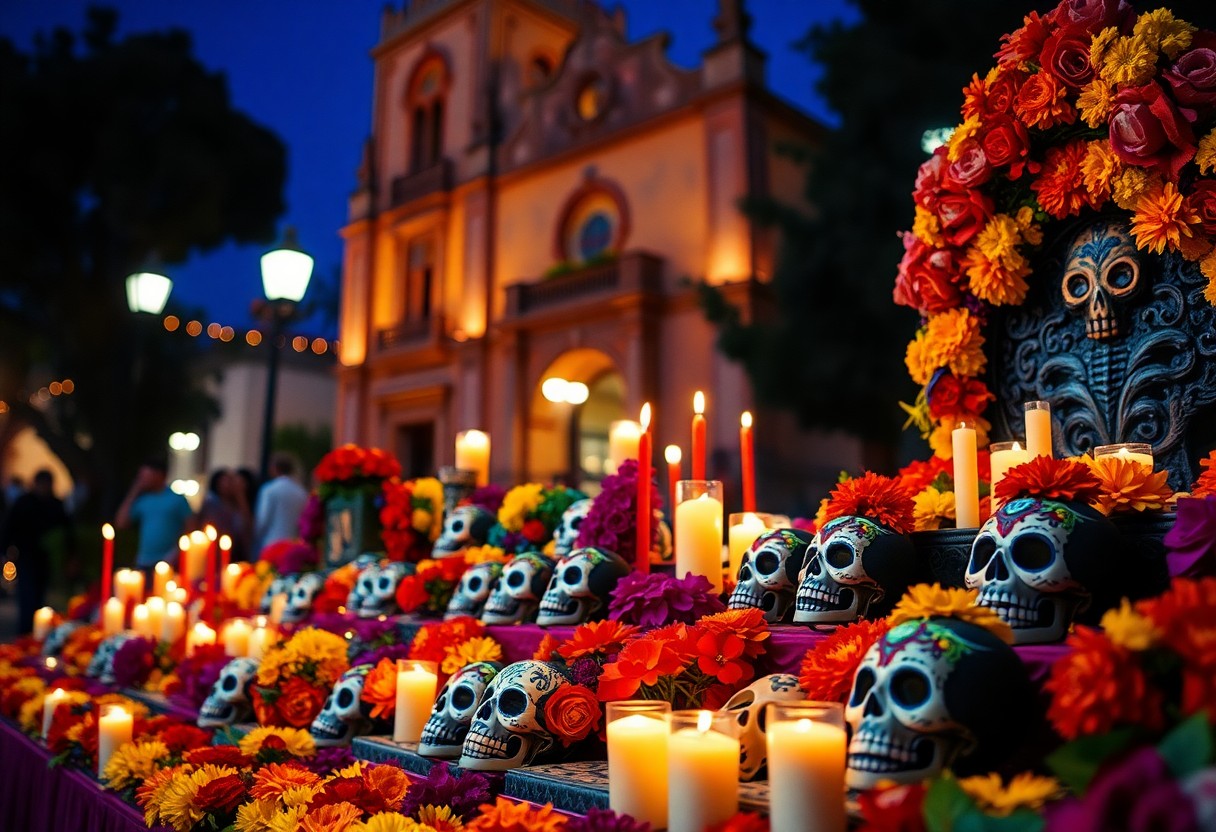
Family Involvement in Celebrations
All families in San Miguel de Allende embrace Day of the Dead as a profound collective experience. You’ll witness generations coming together, honoring ancestral memories through shared rituals and emotional connections. Each family creates elaborate altars, prepares traditional foods, and participates in commemorative activities that strengthen familial bonds during this significant cultural event.
Activities for All Ages
Celebrations in San Miguel offer engaging experiences for every family member. You can expect children painting faces, creating papel picado decorations, and participating in cemetery visits. Elderly relatives share stories, while younger generations learn about their family history through interactive and meaningful traditions that make Day of the Dead a multi-generational celebration.
Sharing Traditions with Children
Celebrations of Day of the Dead provide an extraordinary opportunity for cultural education. You’ll see parents and grandparents explaining symbolic meanings behind altars, teaching children about honoring deceased loved ones, and introducing them to intricate customs that connect past and present generations in San Miguel.
This transmission of cultural knowledge goes beyond simple storytelling. You’ll witness children learning intricate altar-building techniques, understanding symbolic colors and offerings, and developing deep emotional connections to their family’s ancestral heritage through hands-on experiences and guided participation in Day of the Dead rituals.
Community Workshops
Some local organizations in San Miguel offer free cultural workshops during Day of the Dead. You can participate in mask-making classes, learn traditional cooking techniques, and engage in community art projects that celebrate this profound cultural tradition while connecting with local residents.
With numerous community centers and cultural institutions hosting specialized workshops, you’ll have opportunities to dive deep into authentic Day of the Dead practices. These sessions provide immersive learning experiences where local artisans and cultural experts share detailed insights about decorative techniques, symbolic meanings, and historical significance of various Day of the Dead traditions.
To wrap up
Conclusively, you’ll find San Miguel de Allende’s Day of the Dead celebration a profoundly immersive cultural experience that transcends typical tourist encounters. You can expect vibrant altars, elaborate costumes, and street processions that honor ancestral traditions with deep respect and artistic flair. Your journey through this UNESCO World Heritage city during the festival will expose you to intricate sugar skulls, marigold-adorned ofrendas, and community gatherings that blend reverence and joy. By participating, you’ll gain insights into Mexican commemorative practices that celebrate life through the remembrance of those who have passed, making your visit an unforgettable exploration of cultural richness and spiritual connection.
FAQ
When does the Day of the Dead celebration occur in San Miguel de Allende?
The Day of the Dead in San Miguel de Allende takes place annually from October 31 to November 2. Locals and visitors participate in vibrant events honoring deceased loved ones, with the main celebrations happening on November 1 (All Saints’ Day) and November 2 (All Souls’ Day). The city transforms with colorful altars, marigold decorations, and festive processions throughout these days.
What are the most significant cultural activities during San Miguel’s Day of the Dead?
San Miguel de Allende hosts several traditional events, including elaborate altar displays at local cemeteries, street parades with participants dressed in intricate skeleton makeup, and community gatherings in the Jardín Principal. Visitors can explore public altars, watch traditional dance performances, and witness families commemorating their ancestors through music, food, and artistic expressions.
How can tourists respectfully participate in San Miguel’s Day of the Dead celebrations?
Tourists can engage respectfully by attending public events, photographing celebrations with permission, purchasing local crafts, and joining guided tours that explain the cultural significance. It’s recommended to dress appropriately, show genuine interest in the traditions, and understand that this is a deeply meaningful spiritual celebration for local families honoring their deceased loved ones.
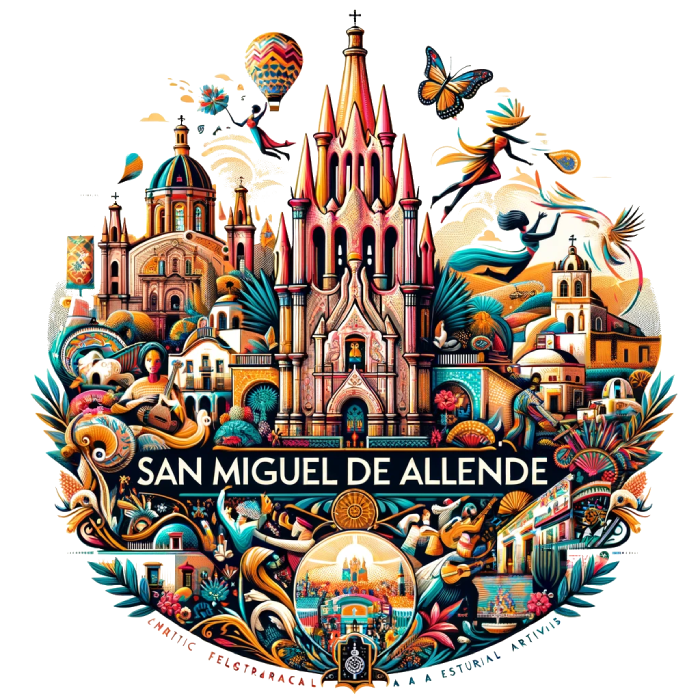


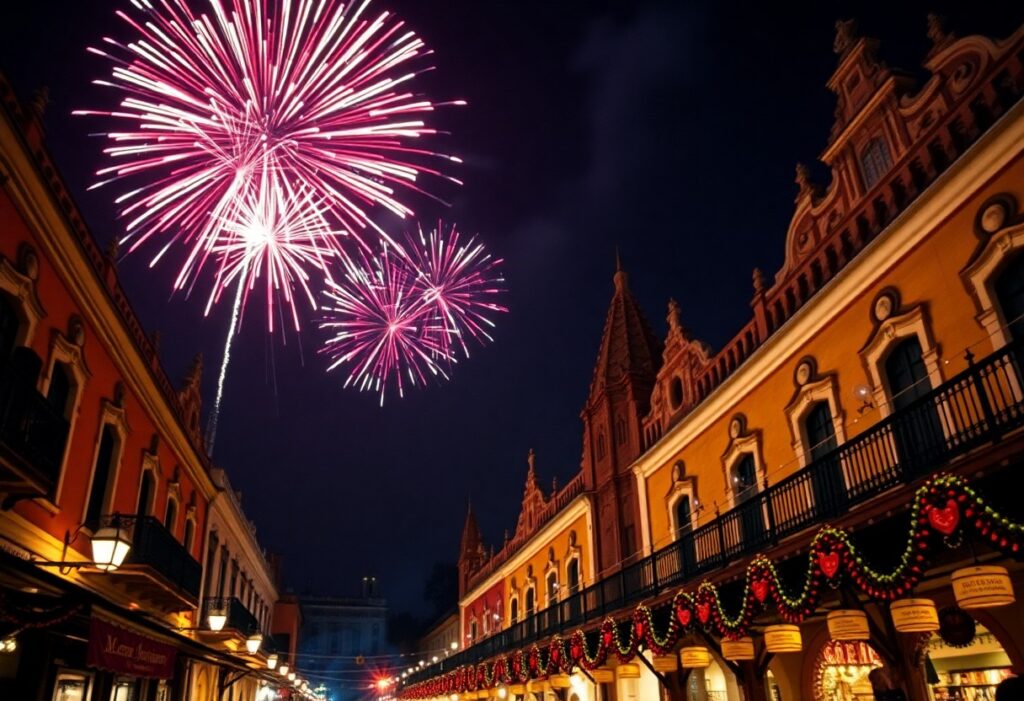
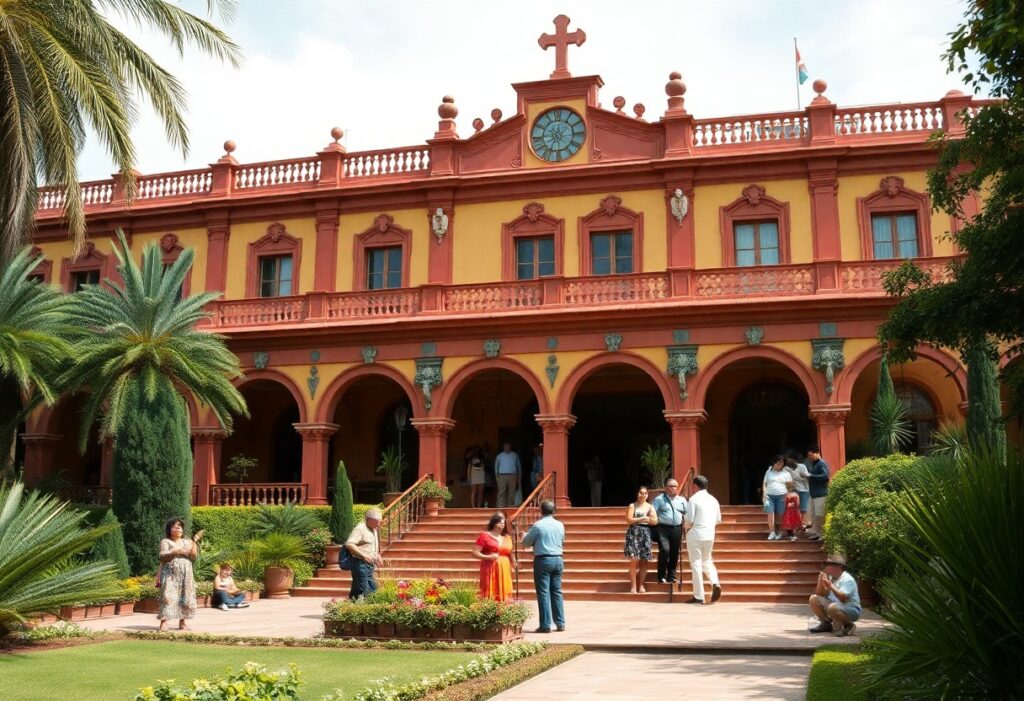
What a beautifully vivid description of San Miguel de Allende’s Día de los Muertos! It sounds like a feast for the senses. I’ve always found the idea of dressing up in skeletal makeup fascinating—it’s like saying, “I’m here to party with the dead and celebrate life!” Honestly, it’s a great twist on typical Halloween festivities. Why not make a day of it?
I’m glad you enjoyed the description! Dressing up in skeletal makeup really does give everyone a unique way to connect with the celebration. It’s like each painted face becomes a part of the larger narrative, blending past and present in such a lively way.
Dressing up in skeletal makeup does really create a special connection to the celebration. It’s fascinating how a simple act like painting your face can tap into deeper cultural narratives and shared histories. I think it’s a beautiful reminder of how art and tradition can intersect, especially during festivities.
You hit on something really interesting with the skeletal makeup. It’s more than just a way to dress up; it’s a deep cultural nod that honors the relationship between life and death in a unique way. In San Miguel de Allende, this celebration is full of colors, sounds, and flavors that create a rich tapestry of remembrance. Families build altars at home and in cemeteries, not so much to mourn but to invite the spirits to join the festivities.
It’s great to hear you enjoyed the description of Día de los Muertos in San Miguel de Allende! The vibrant energy during this time is really something special. Dressing up with skeletal makeup isn’t just about looking ghoulish; it’s a way to connect with traditions that honor those who have passed while celebrating life in a colorful, joyful manner.
I love the way you described the Day of the Dead celebrations in San Miguel de Allende! It’s fascinating how this holiday blends indigenous traditions and Catholicism, creating such a unique cultural experience. I remember visiting during this time, and the energy was palpable—especially seeing families create altars at the cemetery. It felt like a beautiful mix of joy and remembrance.
The Day of the Dead celebration in San Miguel de Allende truly does embody a unique intersection of culture and memory. Experiencing the vibrant displays of altars and the warmth of community bonding during this time is incredibly moving.
Your description of San Miguel de Allende’s Day of the Dead celebration truly captures the essence of this beautiful tradition. I’ve always found it fascinating how Día de los Muertos serves as a bridge between life and death, reflecting a unique cultural perspective that celebrates rather than shies away from mortality. The way locals craft altars with the favorite items of their loved ones reveals a deep sense of connection that resonates with many who experience it.
You’re spot on about how Día de los Muertos blends life and death in such a beautiful way. It’s like a heartfelt reunion, where memories of loved ones stroll back into our lives, and there’s no feeling of sadness—it’s more like joy wrapped in nostalgia. The altars, or “ofrendas,” really do tell stories, showcasing not just personal items but also flavors, music, and moments that shaped their lives. Plus, walking through San Miguel during this time, you can feel the air filled with laughter and music—it’s a celebration that invites everyone to join in, making it a truly communal experience. It definitely shifts the way we think about loss, doesn’t it? It’s all about honoring and remembering, and it’s a beautiful reminder that those we’ve lost are always a part of us.